Contextual Management: Segments
AdButler's Contextual Segments feature uses AI and machine learning to automatically identify the keywords on each page on your site. It's far more convenient, comprehensive, and consistent compared to manually adding keywords, tags, or other forms of metadata on your content.
With Contextual Segments, you can easily see all of your website's categories and keywords at a glance. This will let you provide concrete information to advertisers and get the most value out of your ad spaces by allowing you to set up contextual advertising with just a few clicks.
The best part is that AdButler does all the work. We will automatically analyze pages that have our JavaScript zone tags on them whenever we receive an ad request from those tags. You'll be able to see the data and use it to assign campaigns within a few minutes. You don't have to configure anything or update your zone tags. Future content on your pages that have our zone tags will automatically be analyzed and indexed as well.
Contextual Segments is one of the many ways you can target ads with AdButler. For other forms of targeting, read Targeting overview. To find out how to set schedules and target dates, days, or periods, read Pacing & Schedule.
In this guide, you will learn:
- How to set up Contextual Segments.
- What kinds of information you get from Contextual Segments.
- How to use Contextual Segments to target campaigns to relevant content.
- About a basic demonstration of contextual advertising using segments.
Using Contextual Segments for the first time
Once the feature has been enabled on your account, log in to your AdButler dashboard and click on Contextual Segments on the left navigation menu. The Contextual Segments section will appear.
The first time you open the Contextual Segments section, you will see a message indicating that AdButler is currently analyzing and indexing the content in your site.
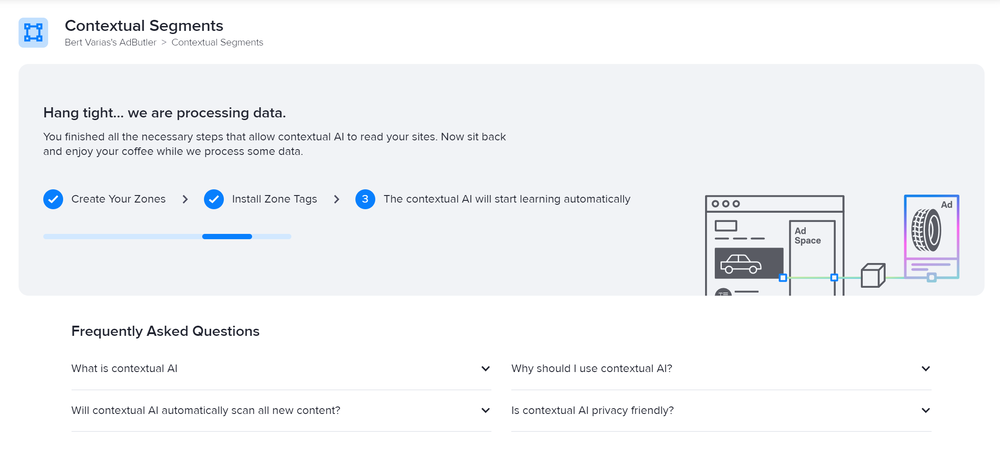
- When AdButler has analyzed your site's content, a list of the generated categories and keywords will appear on the Contextual Segments section.
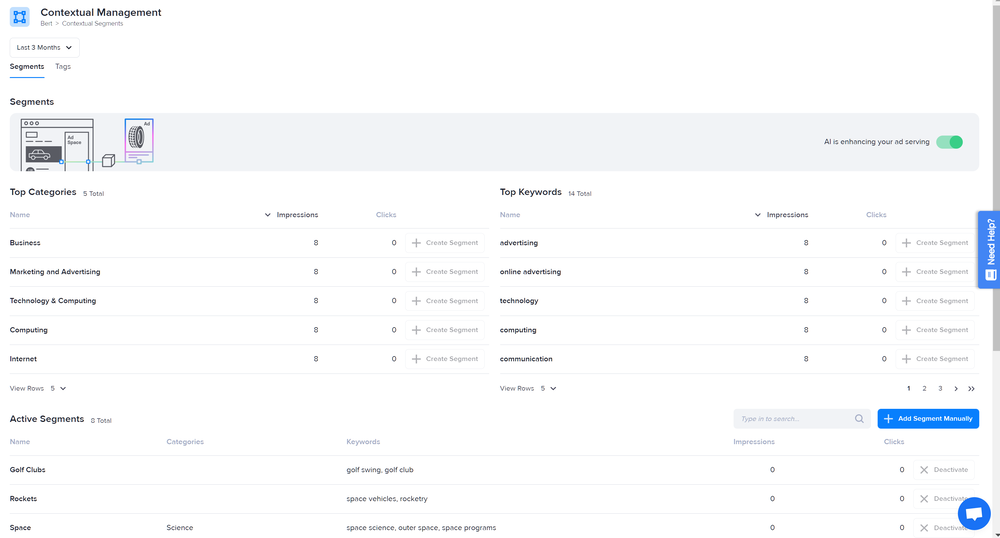
On this page, you can view the top categories and keywords as well as their overall impressions. From here you can make a segment or view the statistics for existing segments.
By default, the contextual data is ranked according to their total impressions from the last 3 months. But you can also view the rankings over different periods by selecting a date range on the top left dropdown menu.
Categories and keywords
Upon analyzing your website or webpage's content, Contextual Segments will provide you with two types of data: categories and keywords. Categories are based on IAB's Content Taxonomy and provide a broad view of the content on your site. Keywords on the other hand are the most relevant common words or phrases that appear on your site's content.
You'll also see a running tally of the impressions and clicks of the ads that are currently being served under each category and keyword. This is how AdButler ranks the value of those contexts.
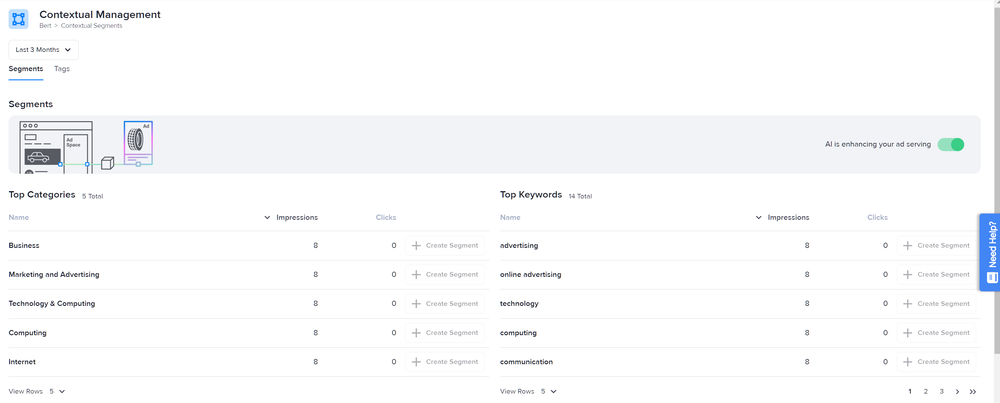
Finally, you can view the performance of the categories and keywords specific to a publisher from that publisher's section (Your AdButler > Publishers > Your Publisher). Click Contextual Details above the Zones table to see the impression and click count of the categories and keywords in the sites where that publisher's zones are used.
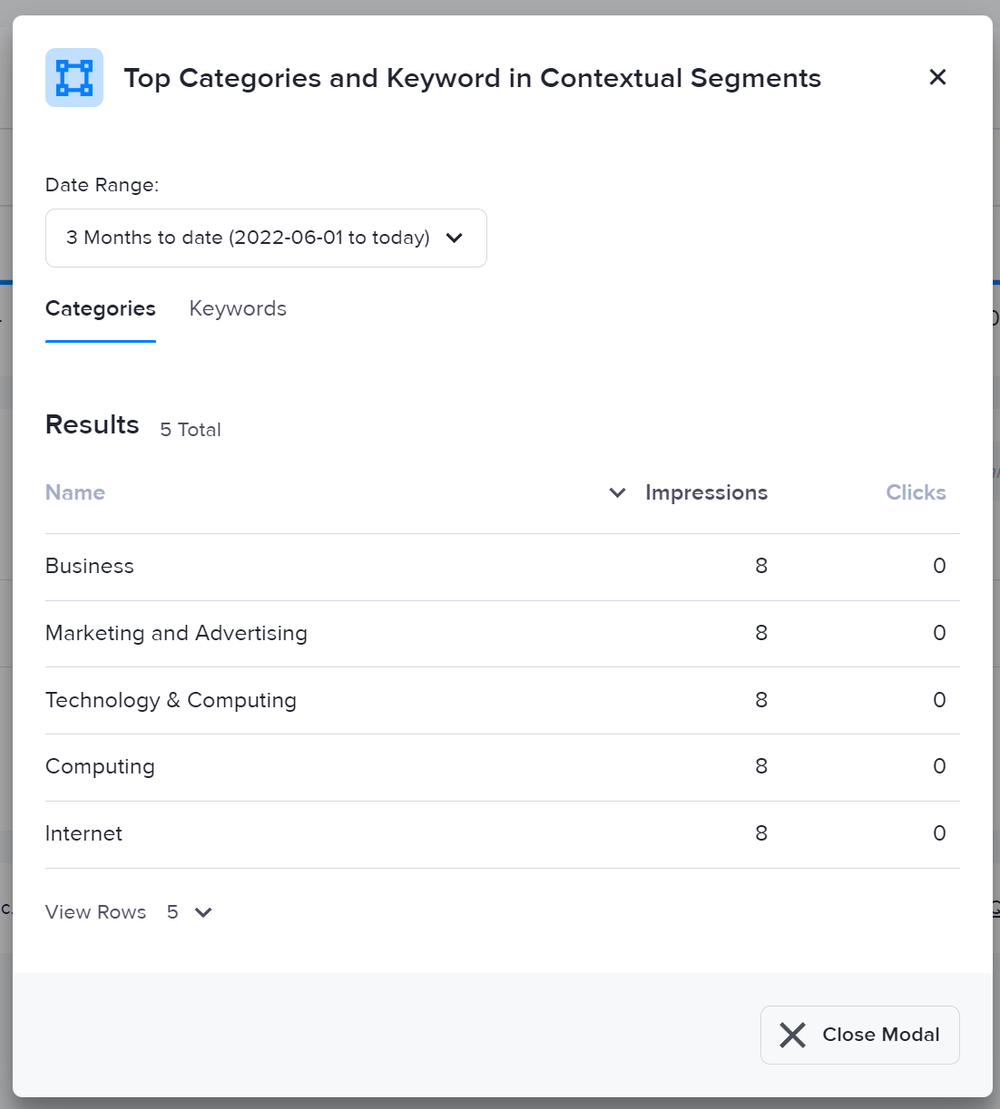
Segments
A segment is a group of categories, keywords, or a combination of both. This is what you will assign to campaigns or ad items to target pages with content that fall under the contexts you selected. Creating segments also makes it easy to see the impressions and clicks of related keywords and categories as a group, down to the ad performance of individual pages.
Creating a segment
- Click on Contextual Segments on the left navigation menu. The Contextual Segments section will appear.
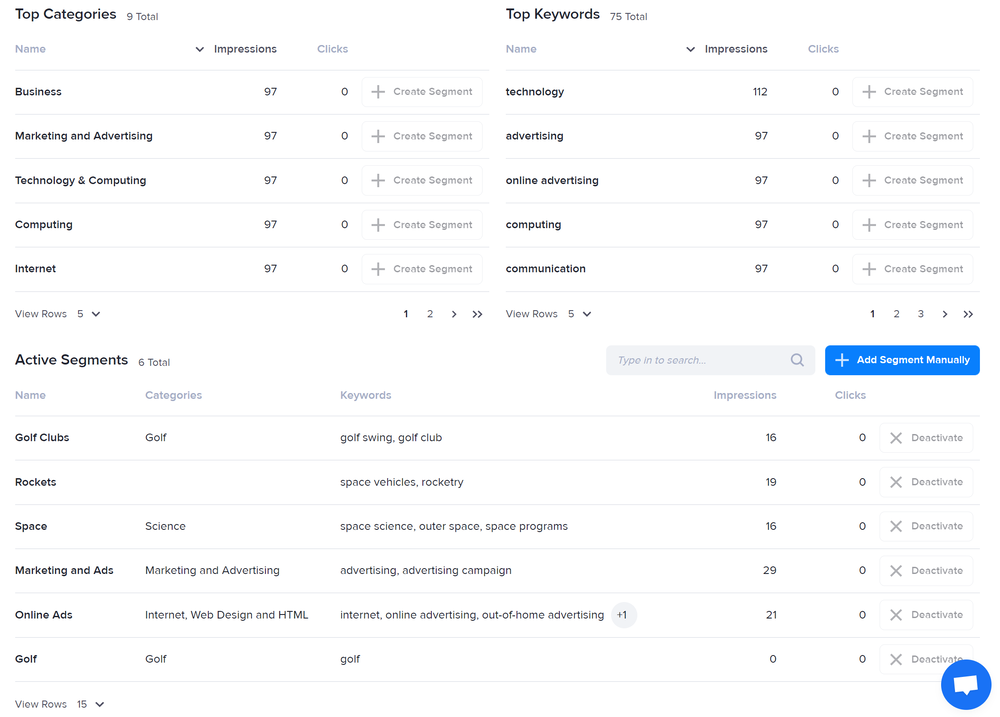
- Click + Add Segment Manually. The Add Segment window will appear.
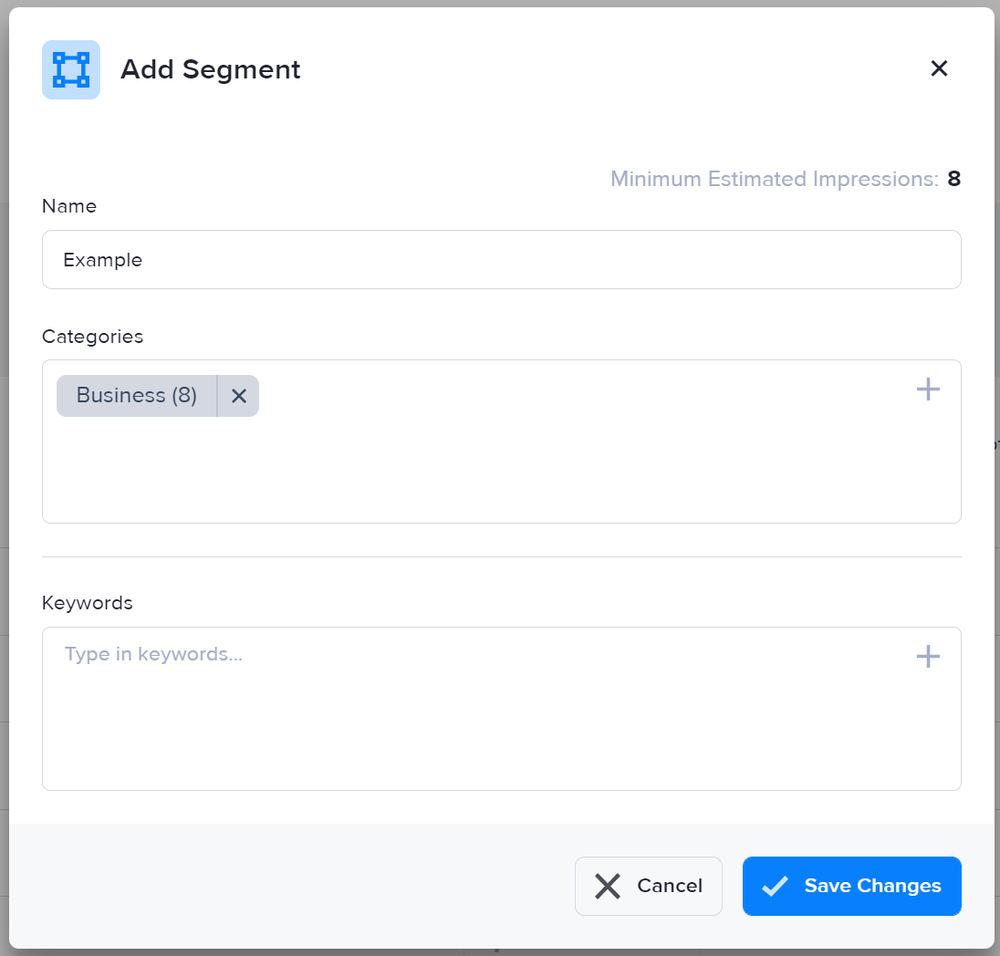
- Enter a name for the segment, then add at least one category or keyword. You can type in the category or keyword or select from the dropdown menu on their respective fields. You can add as many categories, keywords, or both into one segment.
- Click Save Changes. The segment you created will be listed under Active Segments.
Using a segment
Go to the section of the relevant zone (Your AdButler > Publishers > Your Publisher > Your Zone).
Assign the relevant campaign to the zone or click on the name of the relevant campaign under the Assigned Campaigns table. Either way, the assignment details for the campaign will appear.
Click on Targeting to expand its section if it's not already expanded. The Contextual Segments field will be at the bottom of this section.
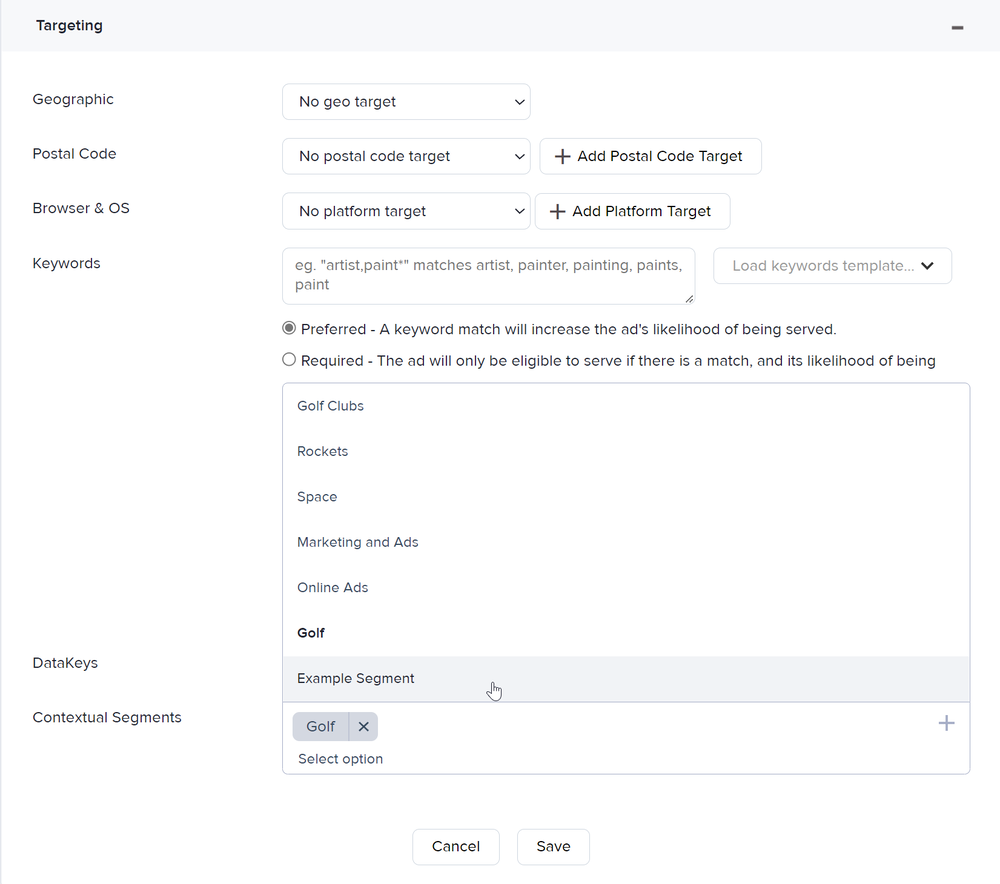
In the Contextual Segments field, type in or browse for the name of the segment or segments that you want to apply to the campaign.
Click Save. Repeat these steps on the other campaigns to which you want to apply a segment.
Viewing statistics about a segment
When you're in the Contextual Segments section, clicking on the name of a segment under the list of active segments will show the statistics for that segment. This is another convenient and powerful tool that you can use to attract advertisers as well as analyze the value of your content.
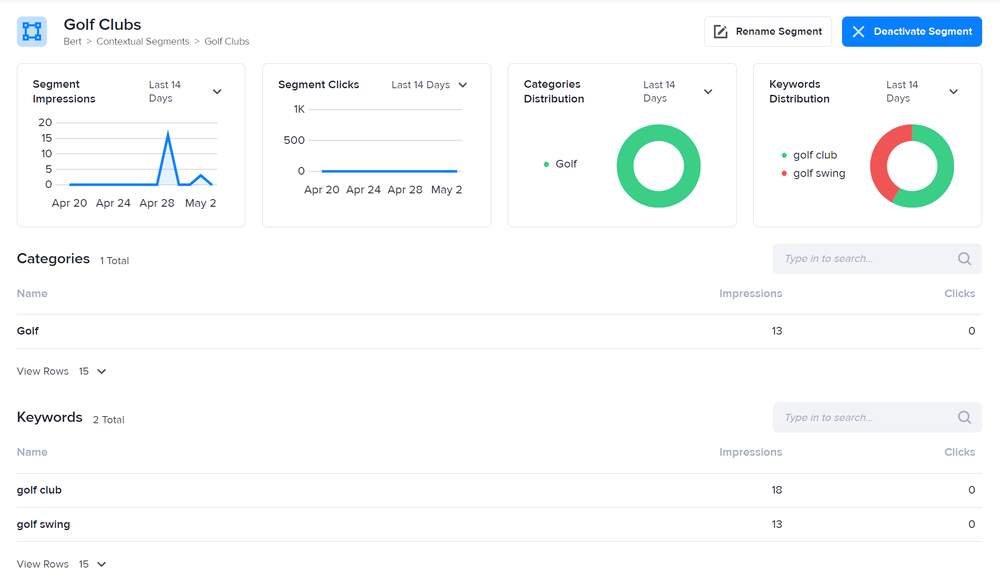
Not only does a segment's statistics page show the impressions and clicks for each category and keyword assigned to it, it also shows the ad performance of each domain and page.
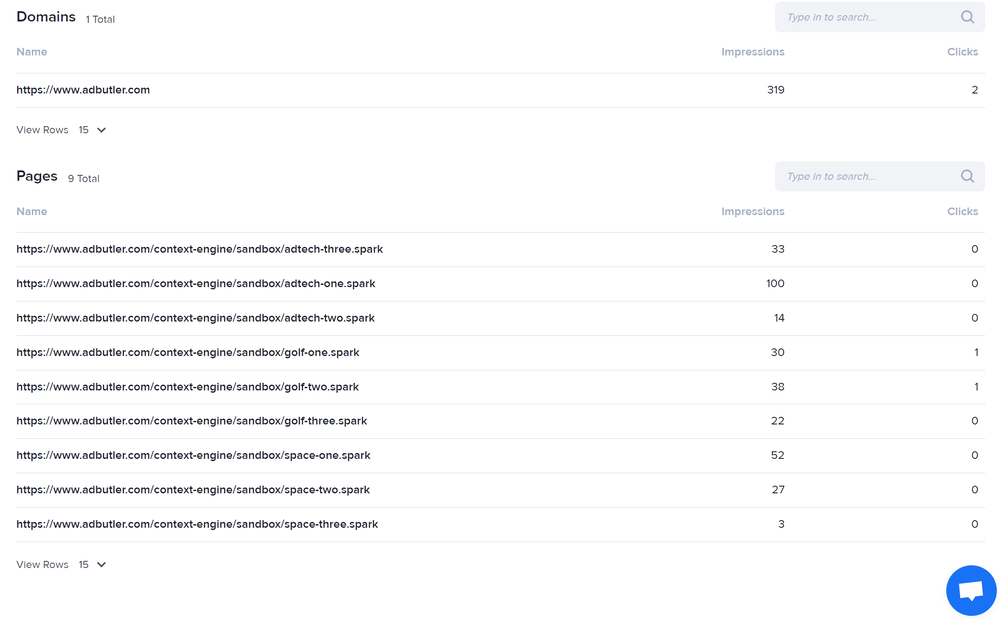
Sample application
Segments allow you to assign campaigns for different products, services or topics into the same zone. You can then place that zone's zone tag into your page - even multiple instances of the same zone - and AdButler will use the segments to pick which campaign to serve based on that page's content.
For example, this zone has campaigns with ads for vastly different products or topics:
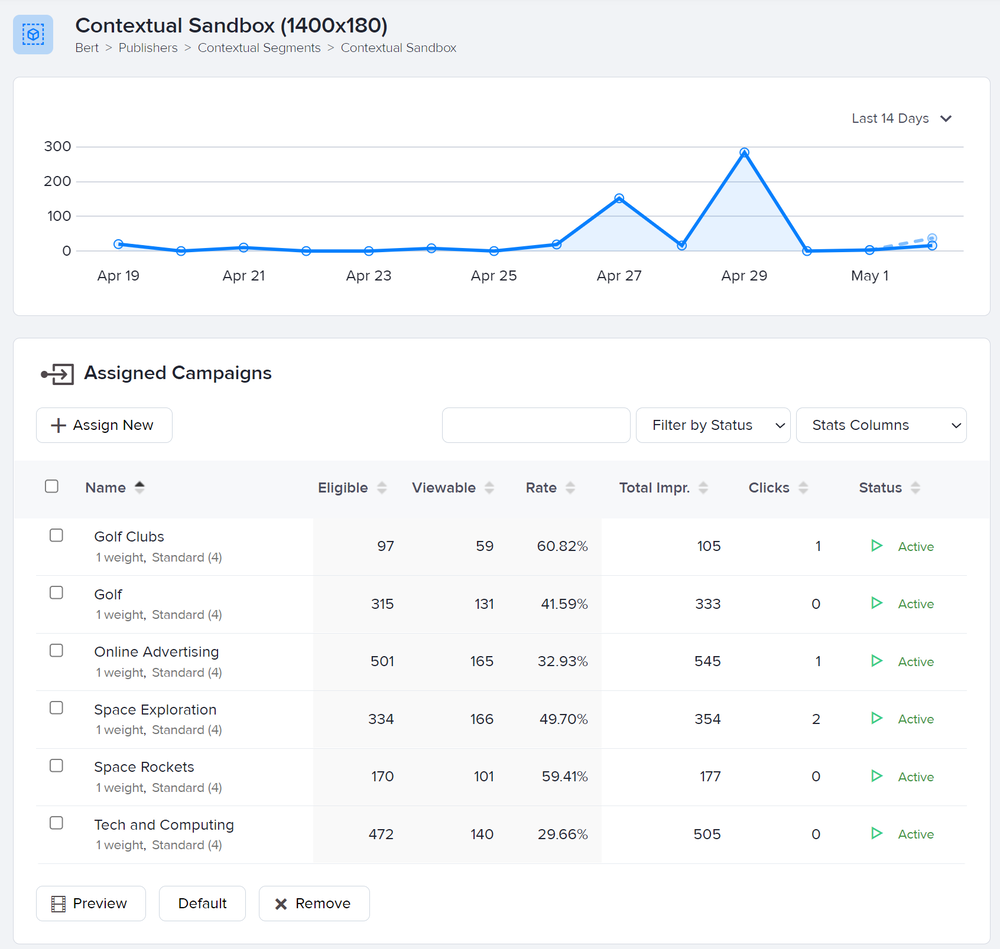
Without some means of targeting, these ads would be served on the same pages at random. Fortunately, each of these campaigns have been given relevant segments. Let's take a look at the ads that AdButler chose to serve on pages with this same zone but with different contents.
This page contains an article about self-serve advertising, hence AdButler chose to serve ads from the Online Advertising campaign:
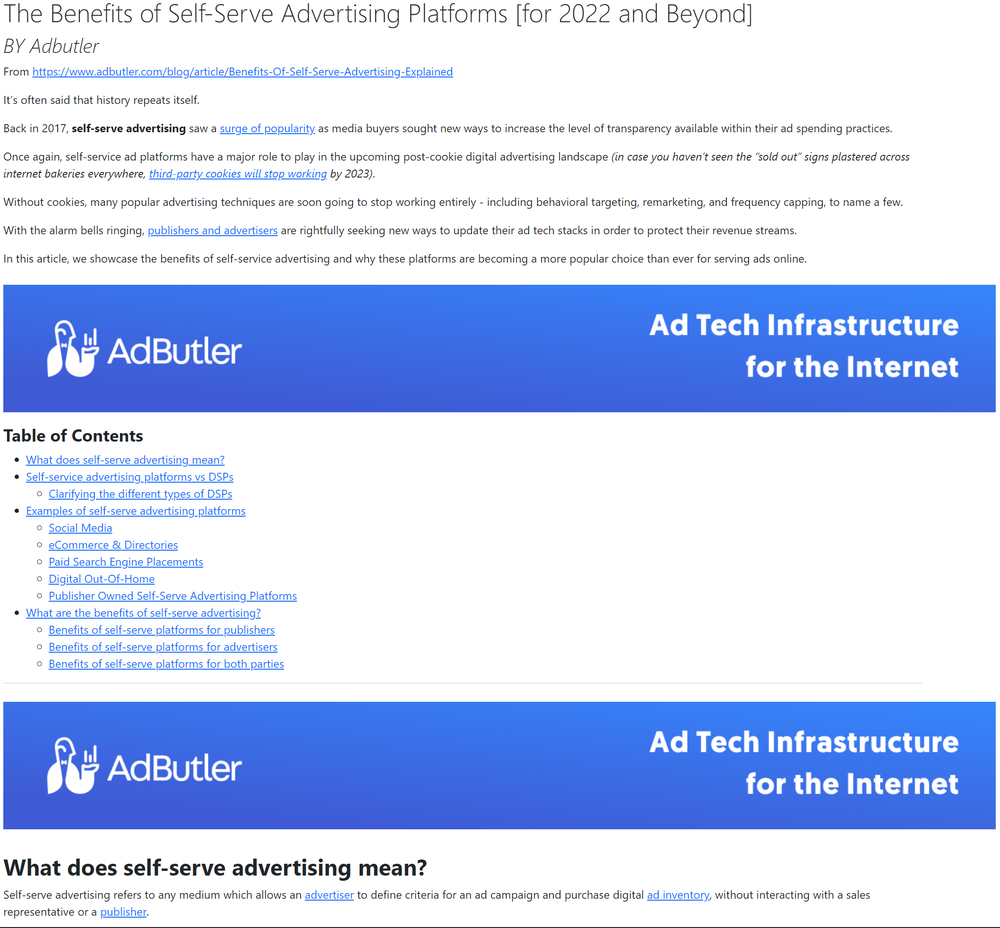
This page on the other hand has an article about a specific golf club, which is why AdButler chose to serve ads from the Golf Clubs campaign:
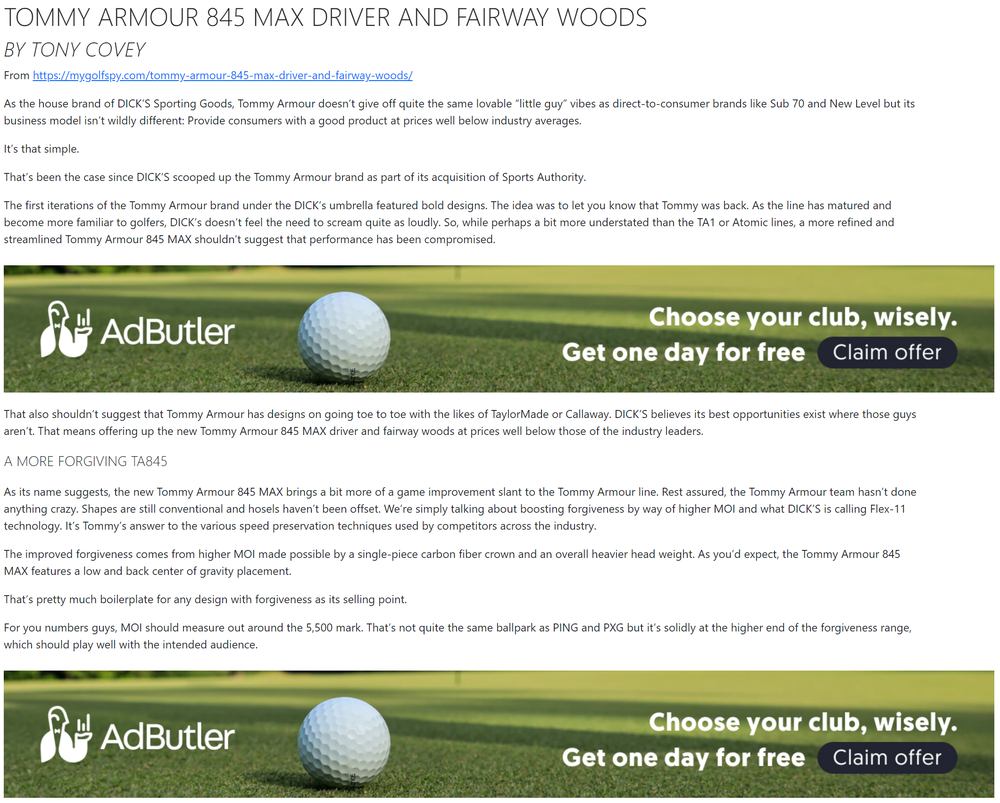
Note once again that both pages have the same zone tag. The segments applied to the campaigns (along with other assignment details) allowed AdButler to serve the ads that match the page's content.